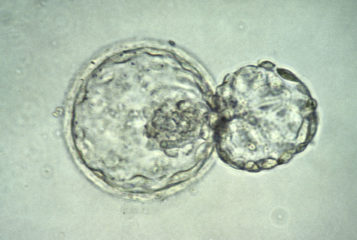Two teams of scientists, working in Vancouver and Melbourne, have reported a breakthrough that may allow whole breasts to be grown from individual breast stem cell. The scientists have successfully grown replacement breasts in mice, in work that offers hope for developing new therapies to treat breast cancer and, in the long term, hope to women who have undergone mastectomy. The research also offers new clues as to some of the underlying causes of breast cancer.
The two research teams from the Walter and Eliza Hall Institute of Medical Research in Parkville, Australia and the University of British Colombia, Vancouver have independently reported in Nature their discovery of markers that enable them to identify the particular stem cell type that gives rise to breast tissue. Having identified these cells, the scientists showed that injecting even a single stem cell into a mouse mammary pad could lead to growth of a new breast in five weeks, the normal development time in mice. The newly developed organ contained all types of tissue normally found in breast and was also able to produce milk normally. This is the first time that a whole organ has been successfully grown from a single stem cell.
The researchers found that the newly identified stem cells were more numerous in pre-cancerous tissue, providing hope that new ways of eliminating pre-cancerous tissue can be found, thereby improving the success rate of breast cancer treatment. It has long been known that some women whose breast cancer cells have apparently been eliminated can still undergo a recurrence of cancer. Under normal circumstances these stem cells should develop into healthy breast tissue. However, this work suggests that breast stem cells carrying genetic mutations - through a build-up of errors, external influences and possible familial predisposition - could be acting as 'tumour factories'. As chemotherapy targets rapidly dividing cancer cells, and these potentially mutated stem cells would be much slower at dividing, this could explain why breast tumours can recur in some women.
The team is now continuing its research using excised human breast tumours to establish whether human breast tissue shares the same characteristics as mouse. Dr Mark Shackleton, an oncologist specialising in breast cancer and a member of the research team, warned that although this is an exciting breakthrough, clinical application is still some years away. 'In reality, the information that we are able to gather from these experiments is not going to be translatable into the clinical (treatments) I would expect for at least another 10 to 20 years', he said.
Sources and References
-
Breakthrough in cause of breast cancer
-
Stem cell may drive breast cancer
-
Scientists discover clue to growing new breast tissue
-
Stem cell discovery could help fight breast cancer




Leave a Reply
You must be logged in to post a comment.